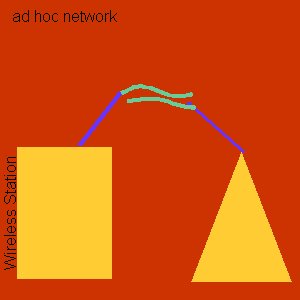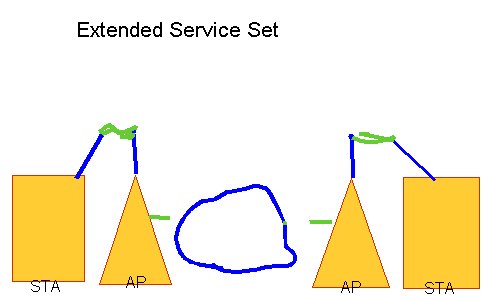The IEEE 802.11b specification allows for the wireless transmission of approximately 11 Mbps of raw data at indoor distances from several dozen to several hundred feet and outdoor distances of several to tens of miles as an unlicensed use of the 2.4 GHz band. The distance depends on impediments, materials, and line of sight. 802.11b appeared in commercial form in mid-1999. IEEE 802.11b compliant networking products that are based on the same type of distribution system are interoperable with one another regardless of the device's manufacturer. An industry group known as the Wireless Ethernet Compatibility Alliance (WECA) certifies its members equipment as conforming to the 802.11b standard, and allows compliant hardware to be stamped Wi-Fi compatible, short for Wireless Fidelity. 802.11b compliant wireless network interface cards transmit in the range of 11, 5.5, 2 and 1 Mbit/s at a frequency of 2.4 GHz. 802.11b is a half duplex protocol – it can send OR receive, but not both at the same time.
Multiple 802.11b access points can operate in the same overlapping area over different channels, which are subdivisions for the 2.4 GHz band. There are 14 channels, which are staggered at a few megahertz intervals, from 2.4000 to 2.4835 GHz. Only channels 1, 6, and 11 have no overlap among them.
- The cards typically are equipped with the Wired Equivalent Privacy (WEP) data encryption, based on the 64 bit RC4 encryption algorithm as defined in the IEEE 802.11b standard on wireless LANs. In addition, there are more expensive cards that are able to use 128 bit encryption. All your nodes must be at the same encryption level with the same key to operate.
- Any network adapter coming within range of another 802.11b network adapter or access point can instantly connect and join the network unless WEP – wireless encryption protocol – is enabled. WEP is secure enough for most homes and business’ but don’t think it can’t be hacked. There are several flaws in WEP making it unusable for high security applications. At this point, it takes some serious hacking abilities to bust into a WEP enabled network so home users should not worry.
- A full strength 802.11b signal will get you about 3.5-4.5 Mbps without WEP enabled. With WEP enabled, expect 2.5-3.5 Mbps. As you put walls and distance between your wireless adapter and your access point, your speed will drop. Don’t expect to put more than a few walls between you and your access point.
- To further enhance wireless security, access points can sometimes be configured to only react to specific computers using the MAC address of the network adapter.





